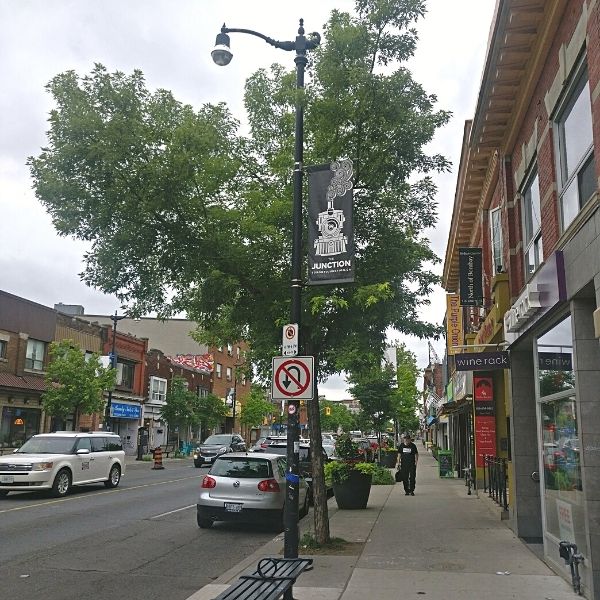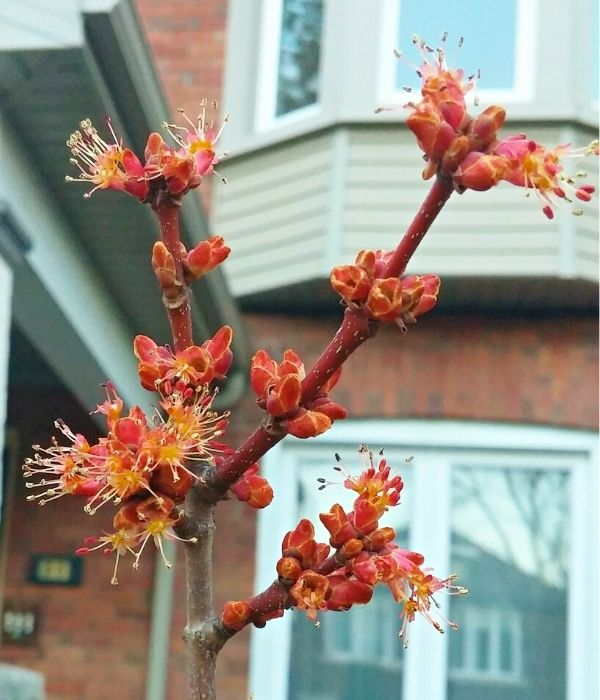
Bees don’t all look the same!
When we think of a bee, many of us picture the European honeybee (Apis mellifera): black and yellow, with stingers, living in hives and making lots of honey. This species, however, is not native to North America, but was introduced in the early 1600’s.
In the Greater Toronto Area, we have over 350 native bee species that come in all colours and sizes! The Bicoloured Agapostemon (Agapostemon virescens) has a distinct, metallic-green head and thorax (upper body). Other native bee species can be cream-coloured, red, orange and even blue! While some native bumble bees can reach 2.5 cm in length, some native sweat bees only reach 3 mm in length. There are some bee species that live in colonies, while others live on their own, burrowed underground, in trees or in human-made structures. Not to mention, many native bee species don’t have stingers or are incapable of stinging humans; and while some make honey, several others do not. The variety of bee-utiful life to see in our cities is staggering! We encourage you to take some time to sit in your garden or your favourite park and see how many different native bee species you can spot.

Native bees are under threat!
A startling result from a study published in One Earth shows that approximately 25% fewer bee species were found between 2006 to 2015 than before 1990. Unfortunately, human activity is creating multiple threats to the survival of our native bee populations. Using harmful chemicals and pesticides in our gardening and agricultural practices, like neonicotinoids, has been linked to bee population decline. Habitat loss is another threat caused by a growing human population and increases in land development. Plus, climate change is also hurting native bee species, since they rely heavily on temperature changes to cue feeding and egg-laying. With more fluctuating temperatures and seasonal changes, this could be disastrous for exposed eggs and vulnerable nests.
From advocating for better protection to enhancing pollinator habitat, there’s lots we can do to support our native bee neighbours.

Bees love trees!
One of the easiest ways to support our pollinator friends is by planting trees! Many trees flower and produce hundreds of pollen-rich flowers on a single tree, making foraging for a native bee very efficient. Some tree species also flower earlier than annual and perennial plants, offering an essential, early-season food source for bees after they’ve depleted all their energy stores over the winter. Trees also provide great habitat for native bee species that make their homes in tree cavities.
It’s important to remember that native tree species do the best job at supporting native bee species because of the strong relationships they have formed over millions of years of co-evolution.
If you are interested in planting native trees or shrubs in your yard, learn more about the LEAF Backyard Tree Planting Program.
Brian Millward is the Acting Community Programs Manager at LEAF.
The Bees Love Trees: A Richmond Hill Biodiversi-tree Presentation was supported by the City of Richmond Hill and Ontario Power Generation.
LEAF offers a subsidized Backyard Tree Planting Program for private property. The program is supported by the City of Toronto, the Regional Municipality of York, the City of Markham, the Town of Newmarket, the Regional Municipality of Durham, the Town of Ajax, the City of Oshawa, the City of Pickering, the Township of Scugog, the Town of Whitby, Ontario Power Generation, Ontario Trillium Foundation and Canadian Trees For Life.
